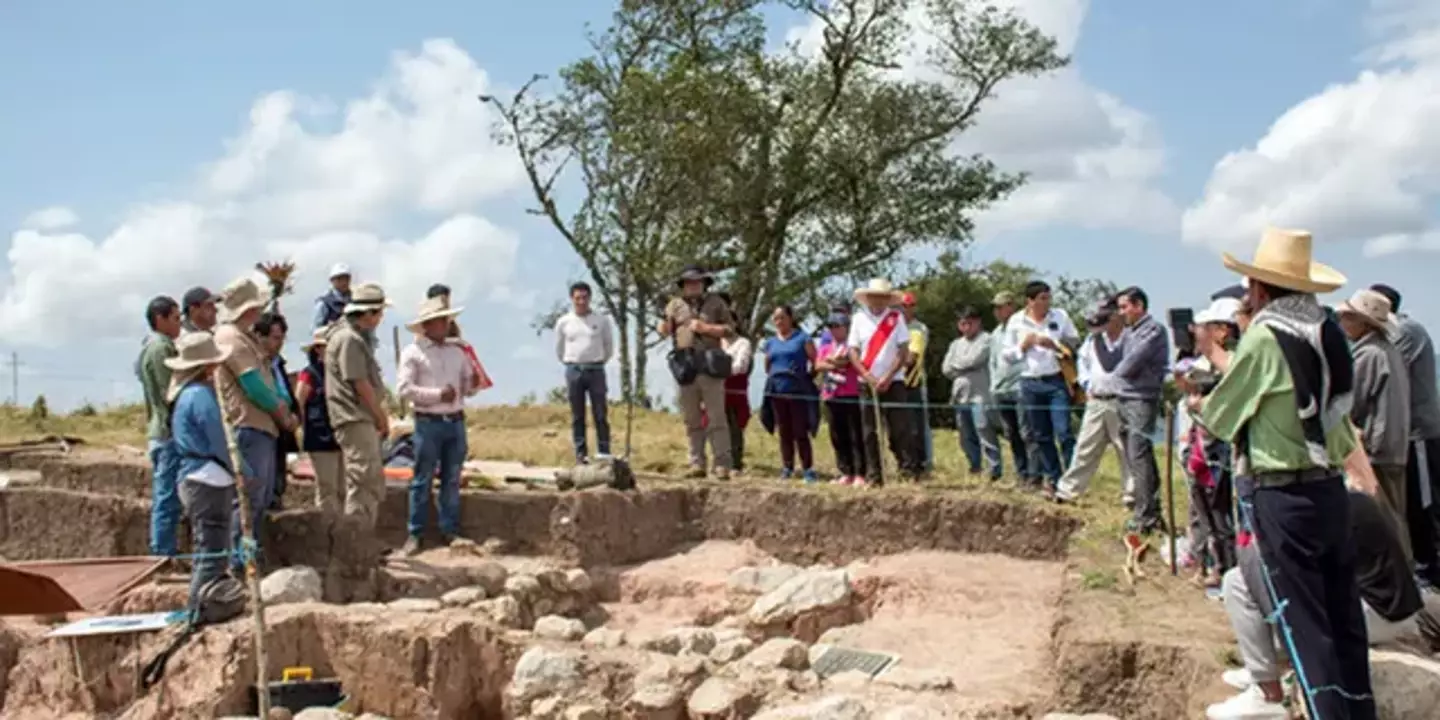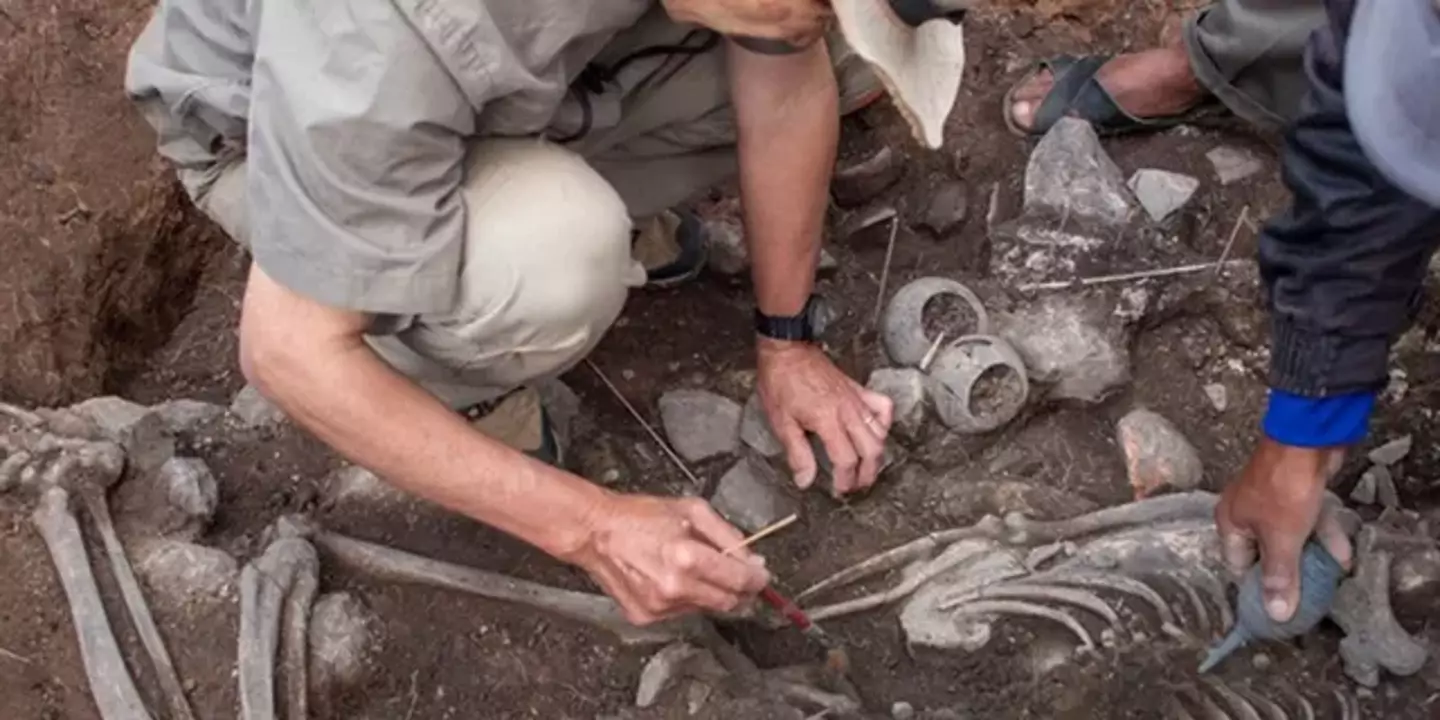
The body of a suspected elite religious leader has been discovered buried face down, with half of his body extended and feet crossed.
Archaeologists currently working in the northern highlands of Peru discovered a tomb from 3,000 years ago, which is believed to have been in honour of a religious leader from 1200 B.C.
At the site called Pacopampa, archaeologists found what they have called the 'Priest of Pacopampa'.
Advert
Peru's Culture Ministry said in a statement on Saturday (26 August) that the tomb of the elite member had been covered in six layers of ash and black earth, and decorated with miscellaneous ceramic bowls.
Yuji Seki, who led the discovery project, said: “Though this person is a man, the associations are very peculiar.
“I think this was a leader in his time.”

The people working at the site believe that the body’s burial included several ancient rituals.
Advert
The tomb had two seals at its upper edges, which indicates body paint used in ancient rituals for people of virtue.
One seal was a design of a jaguar facing west, and the other seal was a human-like face looking east.
The large tomb was measured to be two metres in diameter, and one metre deep, which Seki found very strange - along with the fact the body was lying face down with one half of his body extended and feet crossed.
Seki and his team also discovered that a bone shaped into a tupu, or a large pin to hold cloaks, was found buried with the body.
Advert
Typically, tupus were used to hold together a woman’s blanket.

Archaeologists have been working on this project at Pacopampa since 2005, making this discovery groundbreaking.
However, this is not the oldest discovery at the site.
Advert
Back in 2009, the team also uncovered the tombs of 'Lady of Pacopampa', followed by the 'Priests of the Serpent Jaguar of Pacopampa' in 2015.
Archaeologists could work out that the man had been buried in 1200 BC due to the rock layers which mounted the tomb when it was discovered.
However, last year's find - the 'Priest of the Pututos' - is believed to be even older.
“The burial is also associated with the Strombus snail that you don’t find in the Peruvian sea but in the Ecuadorian one," Seki said at the time.
Advert
"They were brought from a faraway place, it could mean this person had a quite important religious power back then."
Topics: World News, Science